
Exhibition AmP Arquitectos, Tenerife / In the Sign of the Volcano
Gallery of Jaroslav Fragner, 18.12.2007-27.1.2008
Source
Galerie Jaroslava Fragnera
Galerie Jaroslava Fragnera
Publisher
Tisková zpráva
17.11.2007 01:50
Tisková zpráva
17.11.2007 01:50
Lectures
AMP arquitectos
lecture: on Monday, December 17 at 6 PM at the Cervantes Institute
opening of the exhibition: on Monday, December 17 at 7:30 PM at gjf
organizers: amp arquitectos, Jaroslav Fragner Gallery
concept: amp arquitectos, Jaroslav Fragner Gallery
Ten years ago, the AmP Arquitectos studio from Tenerife, led by architects Felipe Artengo Rufino and José Pastrana (along with their former partner Fernando Menis - now representer of Menis Arquitectos), established itself and gained significant acclaim far beyond the borders of their native Spain. They became known for the construction of the government building in the Canary Islands. Their work is based on the connection of creativity, a tradition stemming from the environment of the Canary Islands, a sculptural approach to architecture, and the use of design elements in combination with local materials. Their creations respond to the space in which they live and design.
The exhibition focuses primarily on the recently completed project of the athletic stadium in Tenerife. Its appearance as a giant stone embankment, embedded in a suburban context, represents a masterpiece of modern high-tech architecture. Two residential towers in Añaza (2007), which have already made a name for themselves among the locals, are an example of an unusual approach to rental housing in Spain. Due to their gently curved shape and variously sized windows irregularly scattered across the facade, they resemble giant concrete sculptures. Other projects include the courthouse in Santa Cruz (2007), the extension of the Cabildo building (2007), and a school in Orotava (2005). The competition project of the port in Los Cristianos (2007) illustrates the sensitive approach of Felipe Artengo Rufino and José Pastrana to urban architecture. It comfortably transforms the area where the sea meets the city into a zone friendly to both its residents and tourists. The fundamental principles of AmP's creations perceive space as a mixture of geological and climatic forces, industry, agricultural and urban relics, and social and cultural influences.
The close approach to the surrounding environment and the methods of its processing allow Felipe Artengo Rufino and José Pastrana to create architecture tailored directly to the site. The landscape diversity of the island, where light predominantly prevails, has a strong influence on their design. At the same time, the "temporal effect" is also essential for AmP's production. The maturation process of their most favored materials - concrete, stone, and wood - connects to natural changes. It emphasizes the strength of architecture. The formal and structural appearance thus becomes even more natural through the influence of time.
opening of the exhibition: on Monday, December 17 at 7:30 PM at gjf
organizers: amp arquitectos, Jaroslav Fragner Gallery
concept: amp arquitectos, Jaroslav Fragner Gallery
Ten years ago, the AmP Arquitectos studio from Tenerife, led by architects Felipe Artengo Rufino and José Pastrana (along with their former partner Fernando Menis - now representer of Menis Arquitectos), established itself and gained significant acclaim far beyond the borders of their native Spain. They became known for the construction of the government building in the Canary Islands. Their work is based on the connection of creativity, a tradition stemming from the environment of the Canary Islands, a sculptural approach to architecture, and the use of design elements in combination with local materials. Their creations respond to the space in which they live and design.
The exhibition focuses primarily on the recently completed project of the athletic stadium in Tenerife. Its appearance as a giant stone embankment, embedded in a suburban context, represents a masterpiece of modern high-tech architecture. Two residential towers in Añaza (2007), which have already made a name for themselves among the locals, are an example of an unusual approach to rental housing in Spain. Due to their gently curved shape and variously sized windows irregularly scattered across the facade, they resemble giant concrete sculptures. Other projects include the courthouse in Santa Cruz (2007), the extension of the Cabildo building (2007), and a school in Orotava (2005). The competition project of the port in Los Cristianos (2007) illustrates the sensitive approach of Felipe Artengo Rufino and José Pastrana to urban architecture. It comfortably transforms the area where the sea meets the city into a zone friendly to both its residents and tourists. The fundamental principles of AmP's creations perceive space as a mixture of geological and climatic forces, industry, agricultural and urban relics, and social and cultural influences.
The close approach to the surrounding environment and the methods of its processing allow Felipe Artengo Rufino and José Pastrana to create architecture tailored directly to the site. The landscape diversity of the island, where light predominantly prevails, has a strong influence on their design. At the same time, the "temporal effect" is also essential for AmP's production. The maturation process of their most favored materials - concrete, stone, and wood - connects to natural changes. It emphasizes the strength of architecture. The formal and structural appearance thus becomes even more natural through the influence of time.
The English translation is powered by AI tool. Switch to Czech to view the original text source.
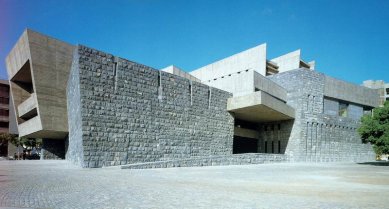
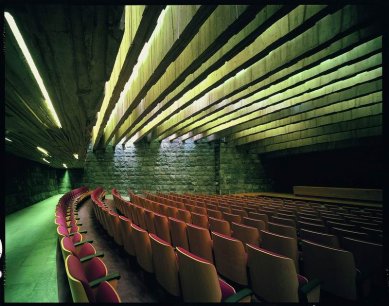
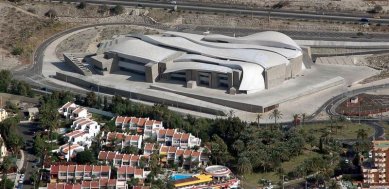
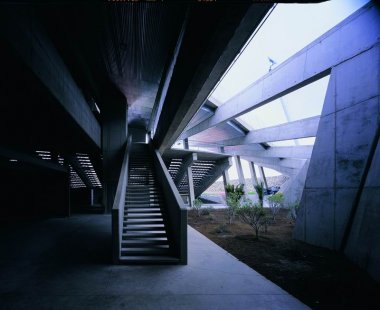

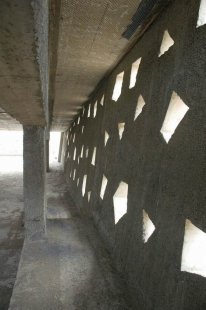
0 comments
add comment






